Image Gallery: A Real-Life Hobbit
Susan Hayes with fellow researchers
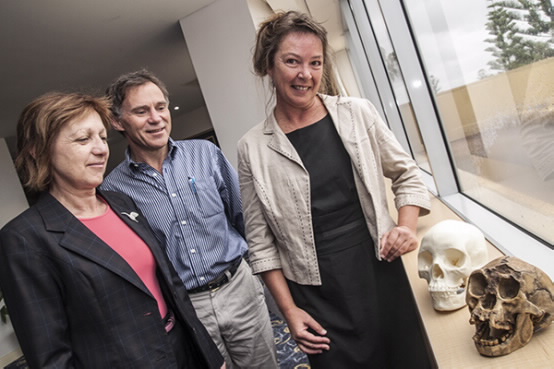
Hayes' background in forensic science helped her reconstruct the face of the famous three-foot (one-meter), 30-year-old female "Hobbit" uncovered in 2003. She is pictured here, at right, with Judy Raper and Richard Fullagar, fellow researchers at the University of Wollongong in Australia.
Skull under scrutiny
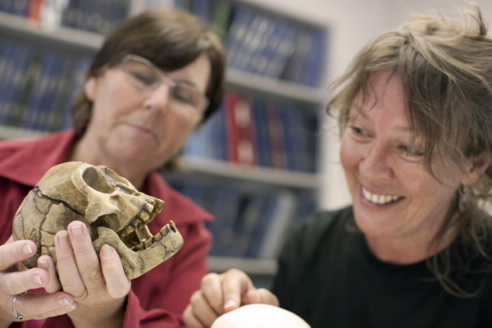
Hayes (right) looking at a replica of Homo floresienses with University of Wollongong researcher Penny Williamson.
Hobbit Declared a New Species as Debate Continues

Virtual endocasts (red) from sectioned skulls (blue) of a human microcephalic (left) and LB1 (right), the fossil specimen of Homo floresiensis. Images were produced using three-dimensional computed tomography (3D-CT).
Homo floresiensis
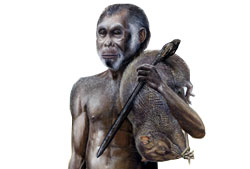
Image
Exposing new layers
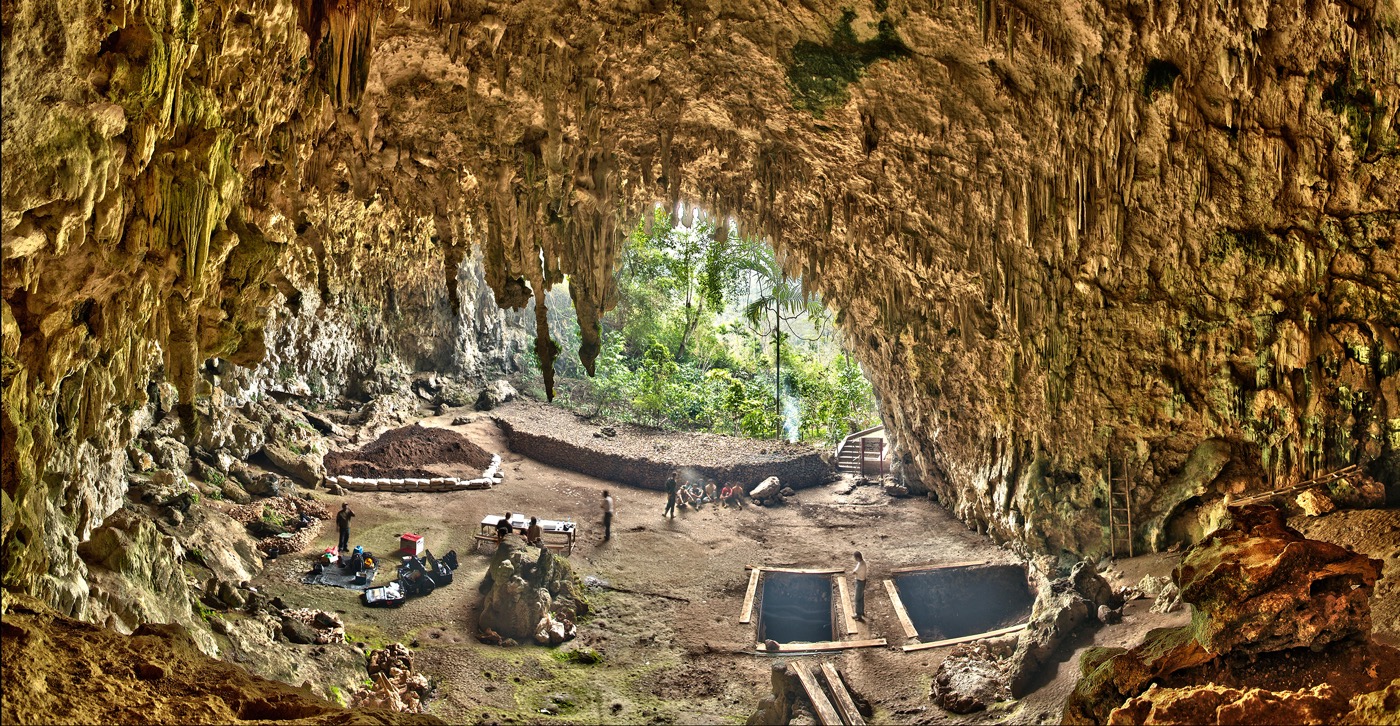
A team of researchers excavates in the limestone cave called Liang Bua, on the Indonesian island of Flores. The scientists exposed parts of the Indonesian cave that hadn't been seen in the original excavations. Their work revealed that layers of sediment in the cave were not deposited evenly. That uneven layering may have thrown off earlier age estimates for the cave deposits, they said. Their work, showing that the hobbits vanished from the island earlier than previously thought, is detailed in the March 31, 2016, issue of the journal Nature.
Deep dives

Archaeological excavations at Liang Bua cave can reach depths of more than 26 feet (8 meters), as shown in this photo. The analysis, detailed in March 2016 in the journal Nature, showed that the hobbits used the cave between 190,000 and 50,000 years ago; they were likely not there as recently as about 12,000 years ago, which had been suggested previously. So the hobbits may not have known their big-bodied relatives.
"There was no lengthy period of overlap between the two species, as far as we can determine," said study co-author Richard "Bert" Roberts, a geochronologist at the University of Wollongong in Australia. "In fact, we don't even know if they overlapped at all."
Get the world’s most fascinating discoveries delivered straight to your inbox.
Hobbit Relatives
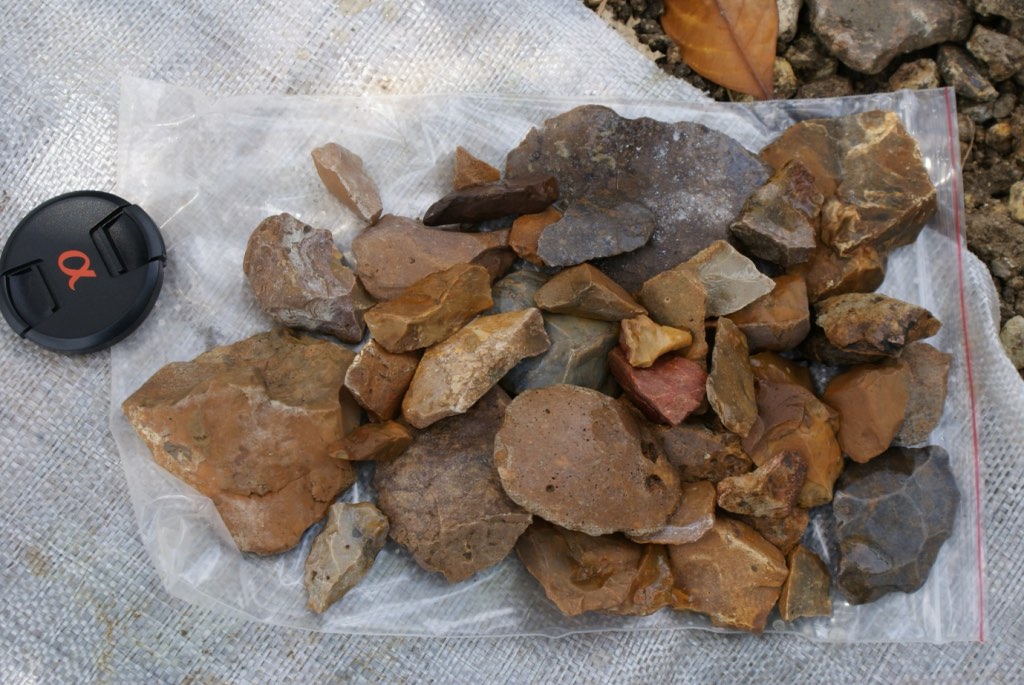
Stone tools discovered on the Indonesian island of Sulawesi dating back at least 118,000 years suggest that an unknown lineage of toolmakers, relatives of the diminutive "hobbit" once lived there. [Read the full story on the mysterious hobbit relative]
Toolmakers' Tools
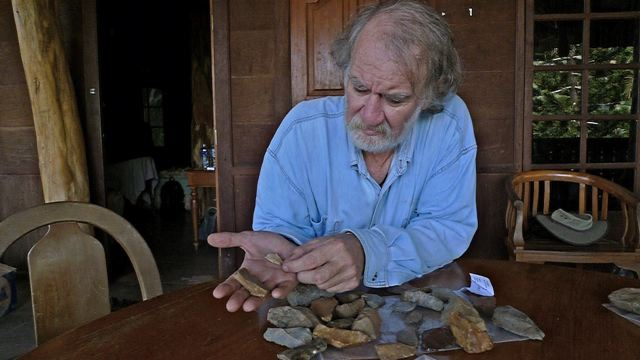
The stone flakes, or sharp artifacts likely used for cutting or scraping, are the earliest signs of hominins seen on Sulawesi yet, said the researchers who detailed their work in the Jan. 14, 2016, issue of the journal Nature.
Nestled near Flores

The excavations of the mysterious hobbit relative took place near the village of Talepu on Sulawesi. The island itself sits just north of Flores, where scientists in 2003 unearthed 18,000-year-old fossils belonging to a hominin with a grapefruit-size brain who has been dubbed the hobbit for its diminutive size (3-foot, or 1 meter, tall).
Talepu excavation
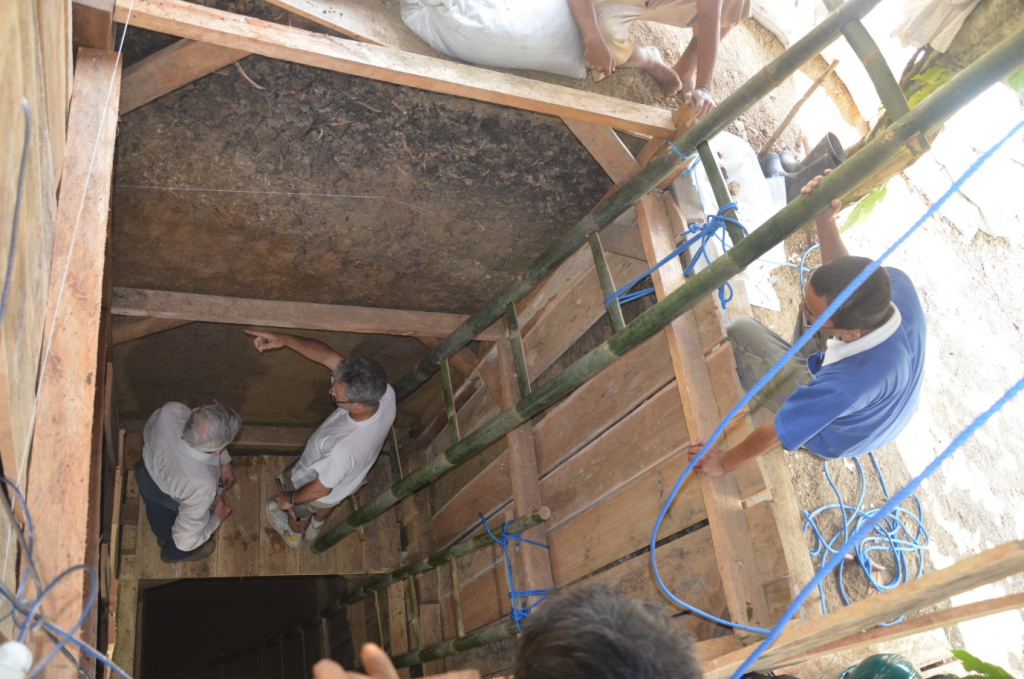
Scientists excavate at the Talepu site on Sulawesi, where they found evidence of a tool-making hominin. "Now, we can start trying to find fossil evidence of the makers of these ancient tools," lead author Gerrit van den Bergh, a paleontologist and zooarchaeologist at the University of Wollongong in Australia, told Live Science.



